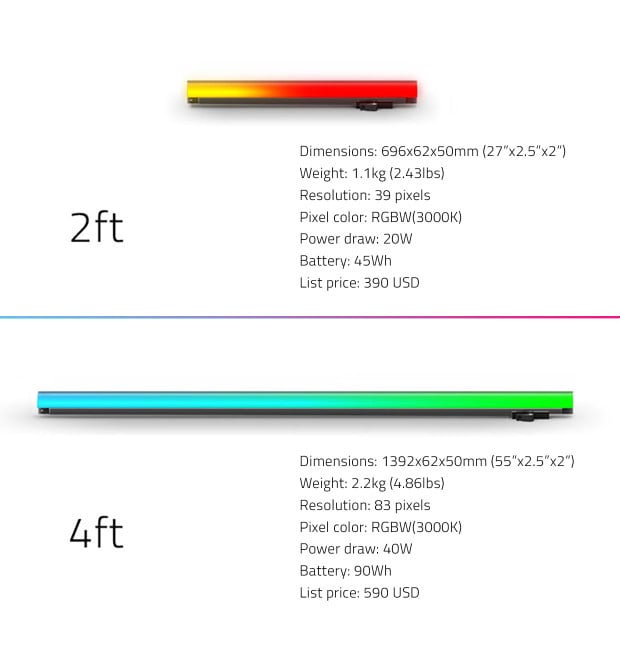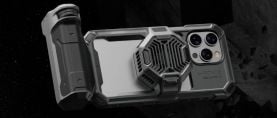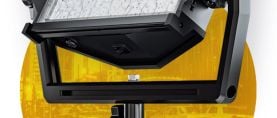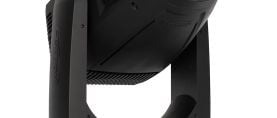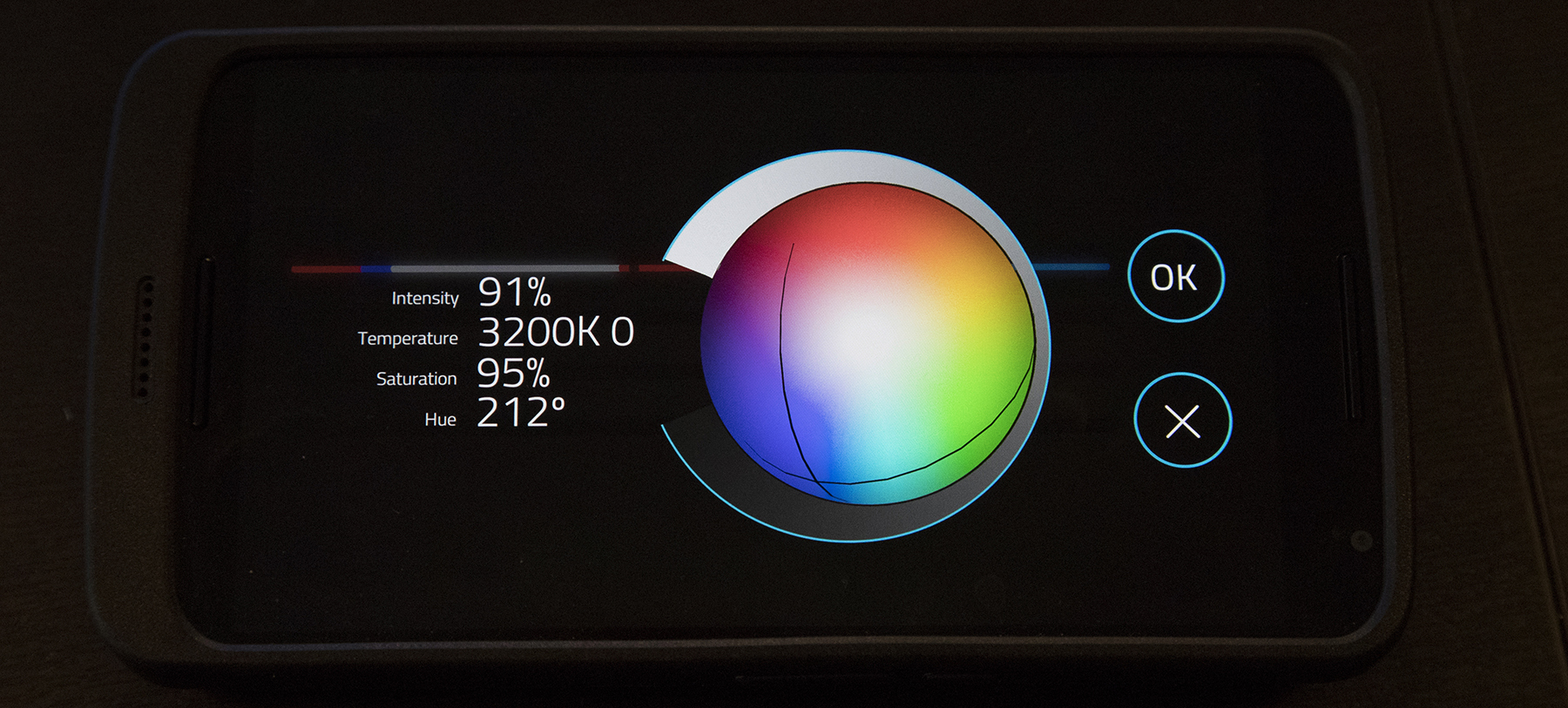
Digital Sputnik’s DS Voyager “Smart Light” LEDs
Digital Sputnik’s Kaur Kallas and Per Fasmer discuss the DS Voyager, offering variable RGBW 2-foot and 4-foot tubes, while showing off the wireless capabilities with a prototype.
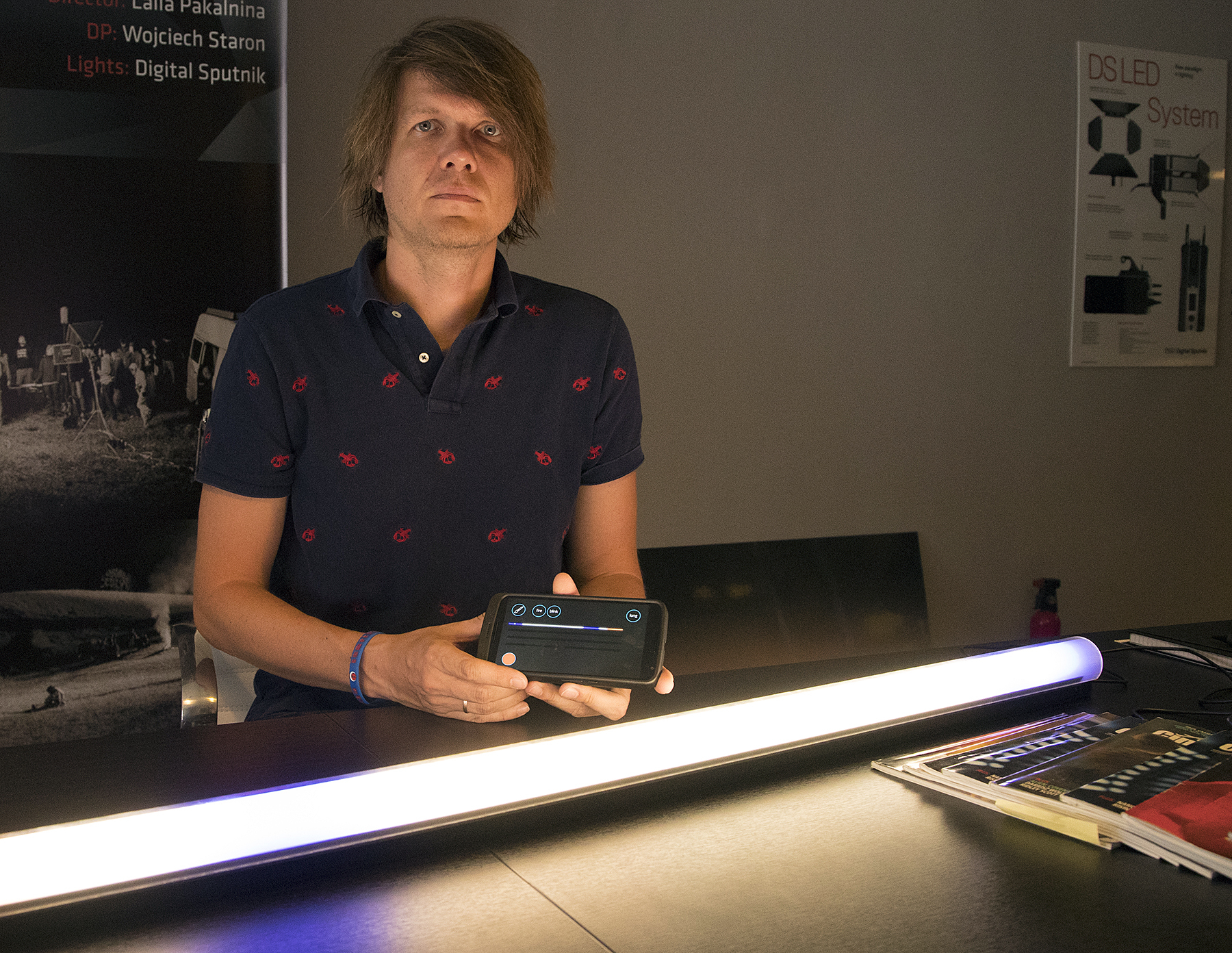
Known for their advanced, color-tunable RGBW LED lighting solutions, Digital Sputnik is unleashing a rather remarkable new line of “Smart Lights.” With a campaign now live on Indiegogo, the company is raising the back half of the funding needed to manufacture their DS Voyager line of WiFi-accessible, smartphone- or laptop-controllable, 2-foot and 4-foot LED tubes.
They hope to raise an additional $300,000. As of this writing, they have raised about $230,000.
Housing two lengths of diodes — much larger and far more proficient than those you find in consumer LED lights — the LED “pixels” in each DS Voyager LED tube are individually programmable with wireless control over white balance, from 1,500 to 10,000 Kelvin, and +/- green adjustment for tint control and skin tone, as well as mixable primary colors, making the DS Voyager capable of outputting 2 billion different colors. With a “resolution” of 83 pixels, the $590 DS Voyager 4-foot, 4.86 lbs., LED tube will run for up to two hours on full output from the internal 90Wh battery. More ideal for tight placement, the shorter $390 DS Voyager 2-foot has half those specs.
Digital Sputnik is run by brothers Kaur Kallas (CEO) and Kaspar Kallas (CTO) with manufacturing operations led by their father, Tõnu Kallas (Head of Industrial Design). Kaspar Kallas runs the European Digital Sputnik team in Tallinn, Estonia, near the Baltic Sea. Recently, cinematographer Greig Fraser, ASC, ACS surprised a lot of people in employing not only Digital Sputnik DS Series fixture-banks as one of the principle lighting systems on Gareth Edwards’ Star Wars: Rogue One, and even more so when he took only three 4x4” Digital Sputnik DS 1 fixtures despite the extensive travel required during his back-to-back filming for Garth Davis’ Oscar-nominated film Lion, which was shot throughout India and Australia.
I spoke with Kaur Kallas and Per Fasmer, Head of Sales for USA, at their store location in Sherman Oaks, Calif., just north of Los Angeles. They were understandably excited to show what the DS Voyager tubes are capable of creating. “Greig Fraser said, ‘If you start using these, you get used to the ease of it,” said Fasmer, who went on to say that cinematographer Paul Cameron ASC is currently testing Digital Sputnik systems on several commercials. “The list is growing of well-known DPs that are using our lights.”
The Digital Sputnik systems could be found in several recent major studio features, including Alien Covenant (shot by Dariusz Wolski, ASC) and Independence Day: Resurgence (shot by Markus Förderer, BVK), and soon on the upcoming Pacific Rim: Maelstrom, shot by Dan Mindel, ASC, BSC.
Kallas says that the new DS Voyager series is not meant as a replacement to the successful DS Series lights, but instead it’s being offered as a complementary soft-light system. With high contrast output for diffusion or other light shaping, the previous DS 1 models are a lot more on the “punchy” side, each equivalent to a 400W HMI at 5600K or 1000W in tungsten at 3200K. “There’s always a need for a punchier source and a softer source on a set,” explains Kallas, who says they are being extremely aggressive with the pricing on the DS Voyager to entice new buyers to the Digital Sputnik fan base while giving previous fans a brand new kind of light to expand lighting possibilities.
The 4-foot light consumes only 40 watts, but Kallas says that it’s hard to say what the equivalent output is, since the tubes have wraparound lighting that exceeds 270 degrees. (Photometrics are now available on the Indiegogo page.) “Since it’s a soft light,” he explains, “we made it more than 180 degrees of coverage.” CRI is 95 across the whole range, though Kallas is quick to point out that he feels CRI ratings are somewhat outdated, noting the CQS rating is a better option for color-rendering metrics as it shows the color space of measured lights. “We design our lights to give more chromatic information that is matched to the capabilities of the sensor, which means that cameras get more color depth with our lights. A problem is that, since we go on our spectrum above the CRI reference line, in RGB, we have peaks in CRI. The light is actually full-spectrum, but there are spikes in the RGB results, so we get penalized for going over the reference line, basically, by the CRI rating. CRI looks for tungsten, which is a smooth curve, and since we have peaks in RGB, we have more spectrum than is needed. They look at how close you are to the reference point.”
The company’s bio states: “We are witnessing the content creation industry going through a fundamental change. This change started with the adoption of digital imaging and is bringing with it fusion of camera, postproduction and lighting disciplines. Knowledge of digital cinema, camera- and post-production disciplines is expanding itself into on-set lighting. This change is all about creating synergy and increase of uncompromised creative freedom.”
Kallas touches on this throughout our talk, saying that “cinematographers who get to use RGB lights never want to go back to traditional lights, because they retain more direct control over the image. What happens when you start using RGB lights is that you need a lighting-control board and an operator. Somebody has to manage all of these lights for a cinematographer to have creative control. We take away the middle man between you and your lights. You have direct access and you have visual representation. That’s something we learned from big sets. You have five to seven people that will be dealing with aspects of the lighting continuity. You have someone in special effects, you have the director’s side, you have someone from production, so there will be a lot of different people overlapping. If you want to do a second-unit shoot or a reshoot, it becomes an investigation into the lighting design. There is no central deposit for the DMX-board. Without having these extra people on the set, you can record in real time without putting all of this effort into it.”
“Once we started developing our own software for the DS lines,” Kallas continues, “we saw that we needed to find a visual way to control lighting when you make visual content. This way it’s easier to adapt these into your workflow without wasting too much time. The question isn’t about writing the software, the question is coming up with an idea about how the user interface should work. That’s the tricky part.”
He goes on to explain that the iOS LightGrading application interface for iOS or Android, developed in-house by Digital Sputnik, has been designed in-house from the ground-up. With touchscreen control over a colorimetry wheel, you simply “paint” on the color, strength, and sequence to each Voyager DS fixture. “On the software side, we needed to build it in order to build the user experience for this hardware. We’re doing it in-house, because we develop everything in-house, then we subcontract out to manufacturing, and then we do the final assembly, testing and calibration in-house.”
“We can’t hire someone to build a user experience for us. We feel that nobody else can do this for us, because we’re the only ones with the experience of being on the set and seeing how things are run. I think that’s why this kind of control hasn’t happened yet, because the DMX boards are made by companies who make them for theatrical and concert applications. The movie industry is too small. So what happens is we end up using tools built for another purpose, basically trying to figure out how to fit a square peg into a round hole. The only thing with DMX is that you can make more high precision controls with buttons and knobs. If you are a very proficient programmer, you can work quite fast. But we have done a few tests. We have programmers in-house that are able to write DMX script in C++ faster than a guy using a controller board. So if you’re a really good programmer, you won’t even need the board anymore with our LightGrading program.”
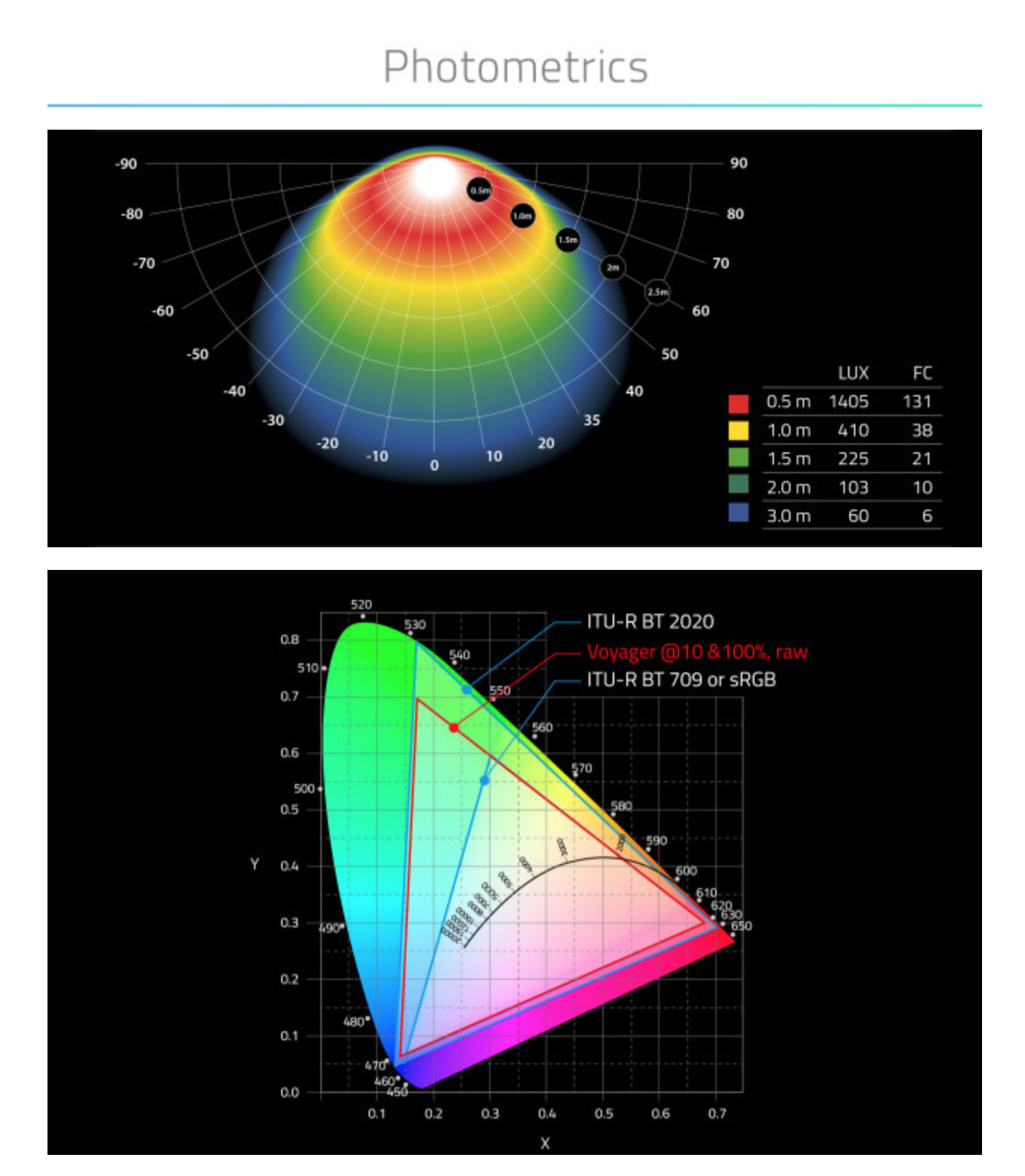
The Voyager DS can be set monochromatically, or as homogenous, true-white light, or it can also be used for complex lighting setups that may require flickering or transitions, including traditional DMX effects like police or firefighter lights and firelight-flicker. Effects and transitions can move smoothly each LED diode to each LED diode as well as fixture-to-fixture, which can create wraparound lighting effects that can move from one side of the frame to another or subtly for close-ups and small highlight effects. Sequences and lighting designs can be programmed, recorded and stored for repeated playback or later usage. The DS Voyager lights will also work with DMX. ArtNet, sACN and RDM protocols to ensure that they can be mixed with other lighting systems from competing manufacturers.
With a built-in media server provided for network access, the DS Voyager lights can create their own WiFi hotspot, one for each LED, or the systems can also be connected to routers and networks. Kallas says that if they make enough during the run on Indiegogo, which ends in a month, they will also add additional features, including a wireless mesh network that is built right into the fixtures so that they will all be able to communicate with each other and the LightGrading app without the need for any centralized servers. The tubes are submersible in water for up to 30 minutes, too.
“We don’t want to do what the DMX-boards have been doing, because they’ve been doing it for 20 years, but it’s a very steep learning curve and, especially if you’re a cinematographer, it’s a juggling act anyway,” finishes Kallas. “You have to do so many things at once, so there is no point for you to try to do DMX, as well.We want to make it very simple so that it is accessible to everybody. You can have a certain area of a fixture doing one thing, and a certain other area doing something else. It’s wraparound light, and it changes its color, its intensity, and all of these effects, which can be added on very easily. The media server is built in, so you have a resolution of 1x83, and if you add another, it’s 2x83. So if you have ten of these, you can even play it a video feed, and play it back as a display. It opens up a lot of new options that people have not really thought of before. We’re going to have Windows and Apple. The simpler stuff, we will keep on phones and iPads. The more complicated things are going to be controlled on laptops, but we will probably charge for these more sophisticated things because it takes a lot of resources to develop. The simple software, however, the LightGrading app, will always be free.”
Follow Digital Sputnik on Facebook, Twitter and Instagram.
CURRENT SPECS
